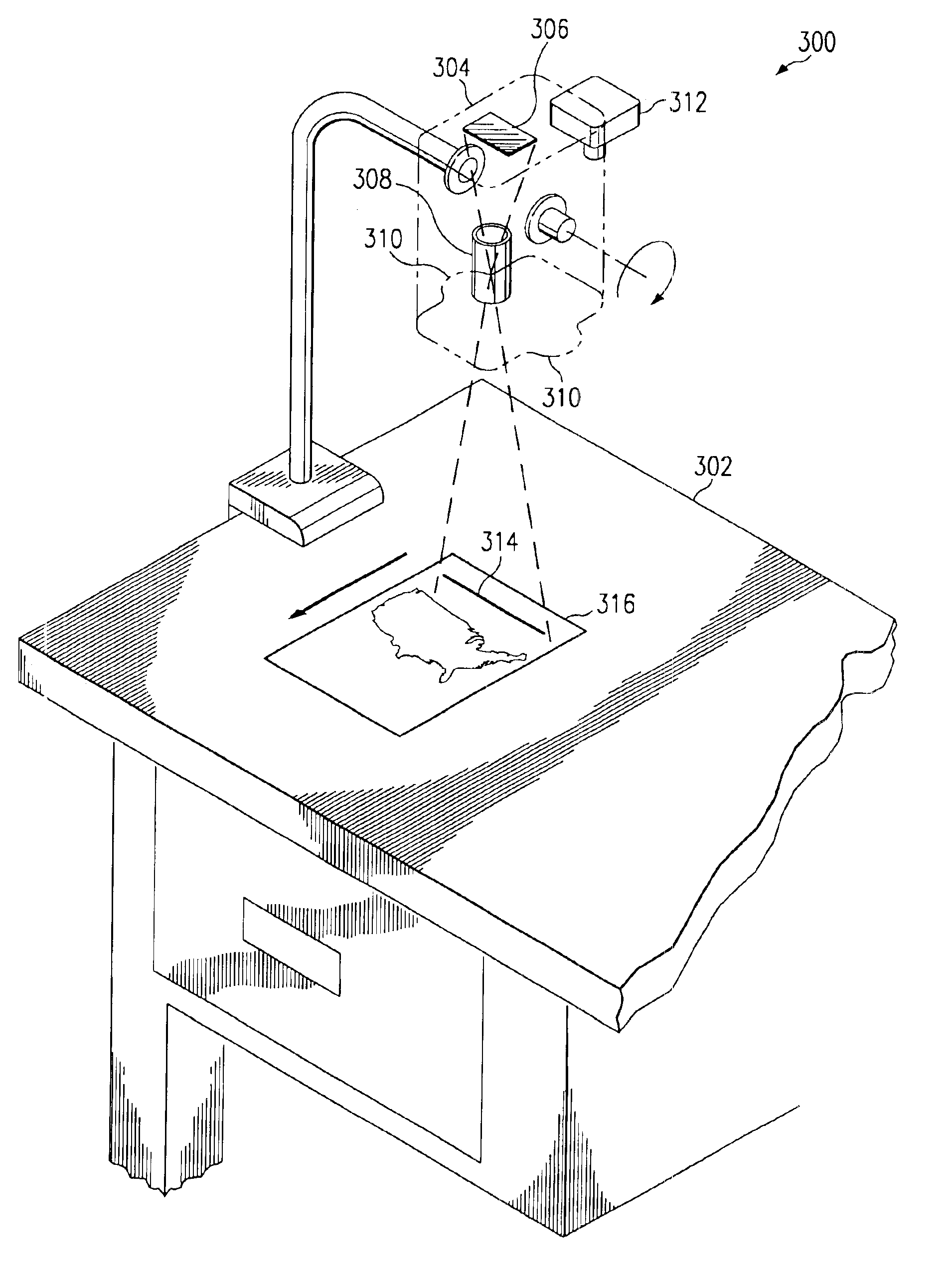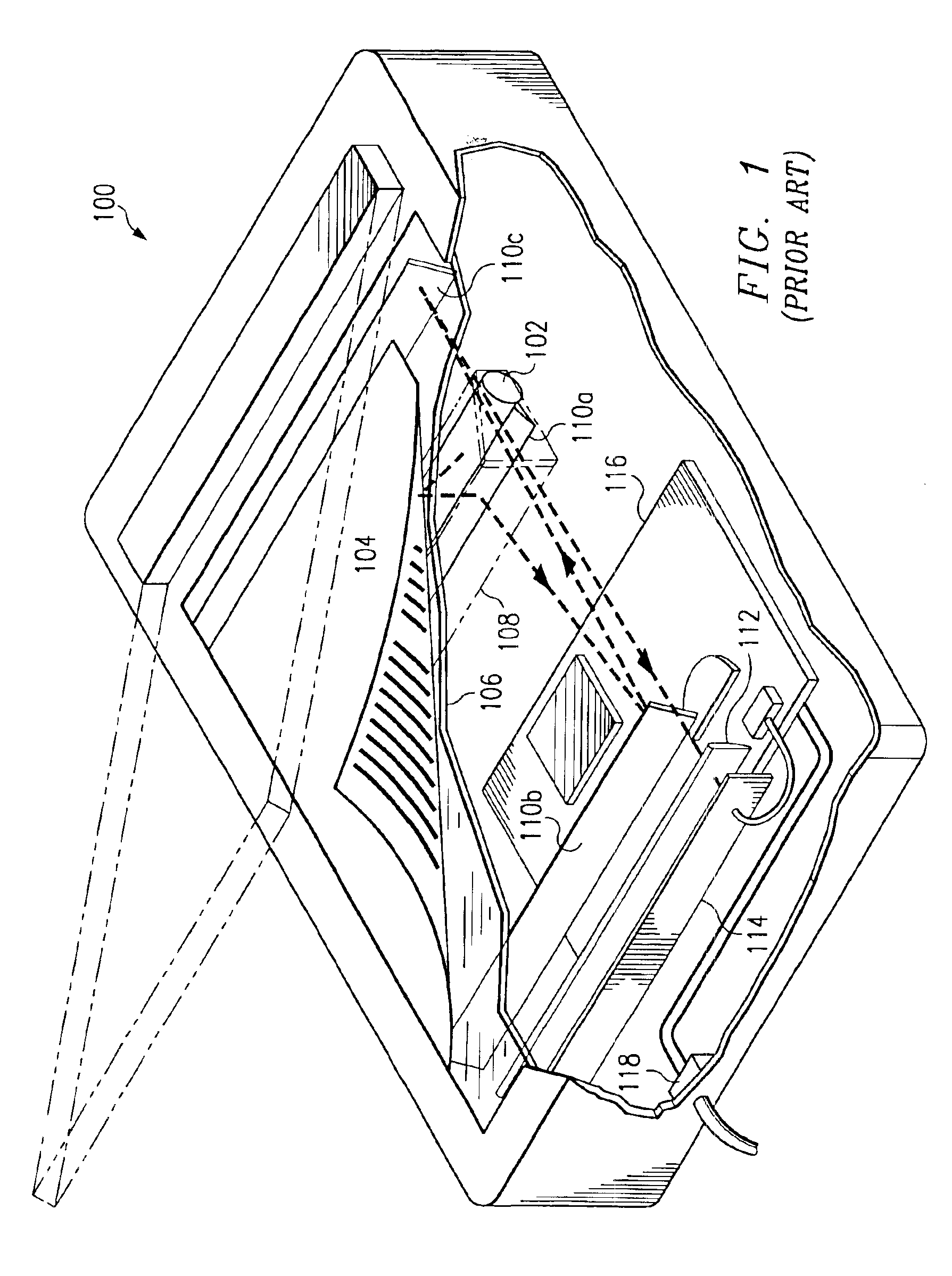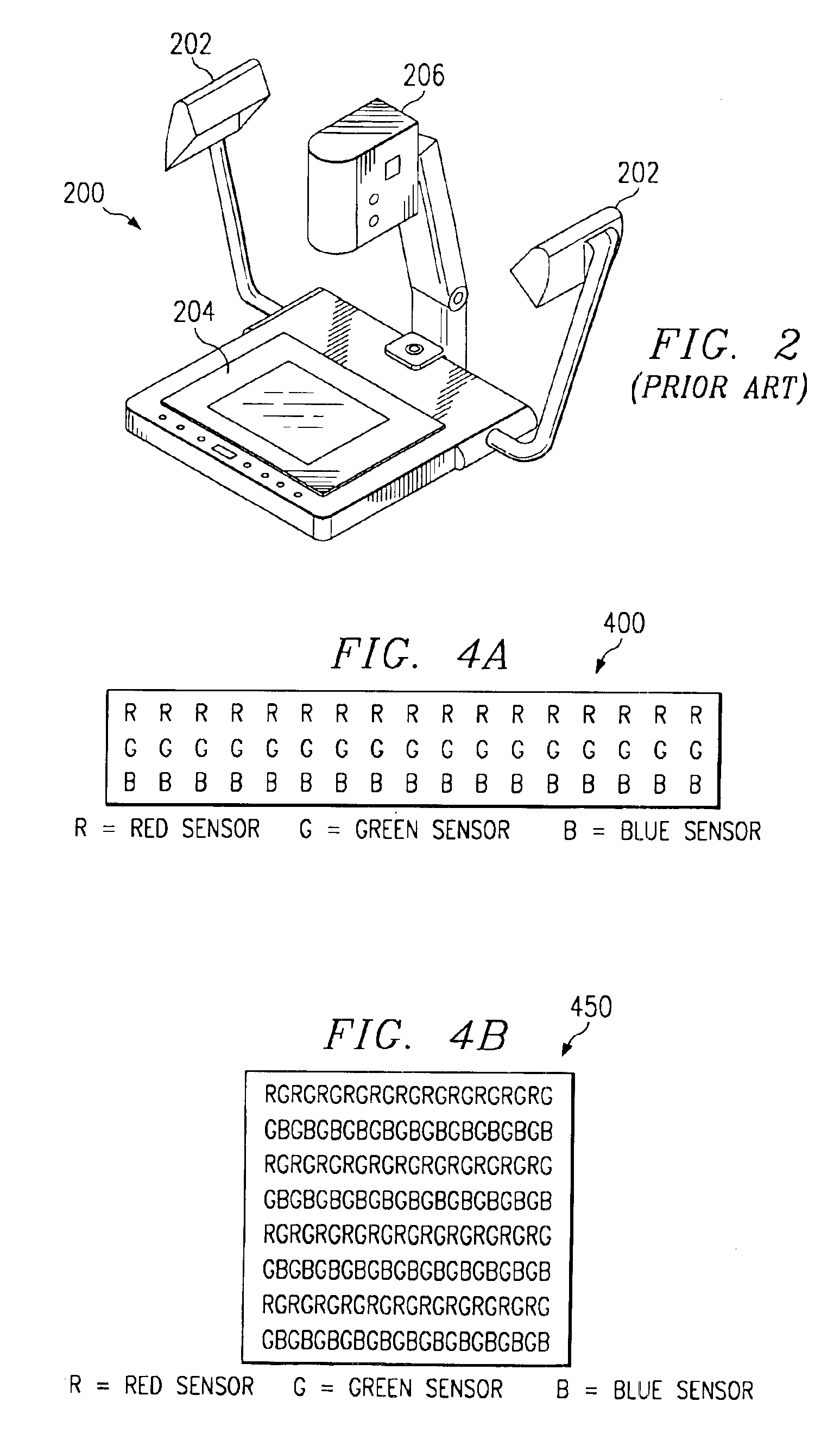As discussed below, digital image capture devices of the prior art typically do not provide convenient, space-efficient means for capturing a digital image with a
high resolution.
For instance, prior art digital image capture devices are not suitable for space-efficient use on a desktop to capture digital images with sufficient resolution for use in an
optical character recognition (OCR) program.
As described above, such prior art digital imaging devices have traditionally been relatively large in size, and therefore would generally consume a relatively large amount of surface area if placed on a desktop.
Furthermore, such prior art digital imaging devices generally limit the types of original images that may be captured.
For example, traditional prior art digital imaging devices, such as flatbed scanners, do not enable the capture of 3-dimensional (“3D”) objects.
1), and as an original is moved away from the platen surface (or has features that extend away from the platen surface) the light diminishes rapidly resulting in inability to accurately capture any portion that is removed from the platen surface (or the lens of the imaging device is otherwise unable to maintain the portion of the original that is removed from the platen surface in focus).
Accordingly, traditional prior art digital imaging devices, such as flatbed scanners, have limited ability to capture 3D originals.
While such hand-held scanners are space-efficient in that they do not require that a portion of a desktop surface, for example, be dedicated solely for such
scanner, various problems are associated with the use of such hand-held scanners.
Such problems arise primarily from the hand-held scanners* heavy reliance on the manual translation by a user in order to perform a scan.
For example, the rate at which the user translates the
scanner across an original is not fixed, and is therefore unpredictable.
An inappropriate translation speed often results in distortions in a captured digital image.
Use of such hand-held scanners are further problematic in that as a user scans an original, the user is necessarily covering up what the user is attempting to scan.
Therefore, it is difficult for a user to accurately scan portions of an original because the original is covered as the user translates the scanner across such original.
Also, as a user translates a hand-held scanner across an original, the user may apply too much pressure against the original and drag such original across the desktop.
For instance,
digital document cameras of the prior art typically do not provide sufficient resolution to enable OCR operations, for example, as with the above-described flatbed scanners.
As an example, Canon's
digital document camera model DZ-3600U provides a resolution of 1900 pixels by 1424 pixels, which may provide an image that is legible to a user for text of 8 point
font or larger, but is insufficient resolution for performing OCR operations or other types of imaging operations requiring greater resolution.
Additionally, modifying
digital camera 206 to enable an increase in the resolution of a captured image appears to be a relatively expensive proposition.
That is,
digital camera sensors that enable such a high resolution (e.g., three
mega-pixels or more) are very expensive.
Accordingly, the resolution of
digital document cameras of the prior art is very inferior to that of prior art scanners, and modifications required for a digital document camera to approach the resolution of prior art scanners are very expensive.
As with the above-described traditional digital imaging devices (e.g., flatbed scanners), digital document cameras are relatively large in size, and therefore generally consume a relatively large amount of surface area (e.g., of a desktop on which it is placed).
For instance, a prior art digital document camera as described in conjunction with FIG. 2 having platen 204 would typically consume a relatively large amount of surface area on a desktop.
While prior art digital document cameras may allow for the capture of a digital image of a 3D object (which is generally unavailable with more traditional digital imaging devices, such as flatbed scanners), the resolution of such digital document cameras is relatively poor.
As described above, prior art digital document cameras typically capture a digital image having insufficient resolution for performing OCR operations or other types of imaging operations requiring greater resolution.
Additionally, modifying such digital document cameras to enable an increase in the resolution of a captured image appears to be a relatively expensive proposition due to the relatively high cost of
digital camera sensors.
Such capture of multiple segments and synthesis of the multiple segments is a relatively complex process.
For instance, such digital imaging method is much more complex than the above-described digital imaging method typically utilized in flatbed scanners, which capture a single, congruent digital image thereby avoiding the synthesis of
multiple image segments.
As described above, look-down digital imaging devices, such as digital document cameras, generally have relatively poor resolution, as compared to that of typical flatbed scanners, for example.
Thus, the relatively complex process of capturing
multiple image segments and synthesizing such segments to form a digital image is performed in an attempt to overcome such limited resolution of prior art look-down digital imaging devices.
Such added complexity to a look-down digital imaging device may substantially increase the production costs of such a look-down digital imaging device.
 Login to View More
Login to View More  Login to View More
Login to View More 


